Insects on Flowers and Fruits
Thrips
In Florida, the thrips complex consisting of Frankliniella bispinosa (Morgan), F. occidentalis, and F. kelliae (Sakimura) is the most frequently observed blossom pest. It causes damage by ovipositing in the panicle and feeding on the floral nectaries and anthers, which may result in premature loss of pollen. Yield reduction might occur if thrips densities reach more than 400 thrips per panicle. These thrips are light-yellowish (Figure 1) and appear commonly during the dry season (January to April).
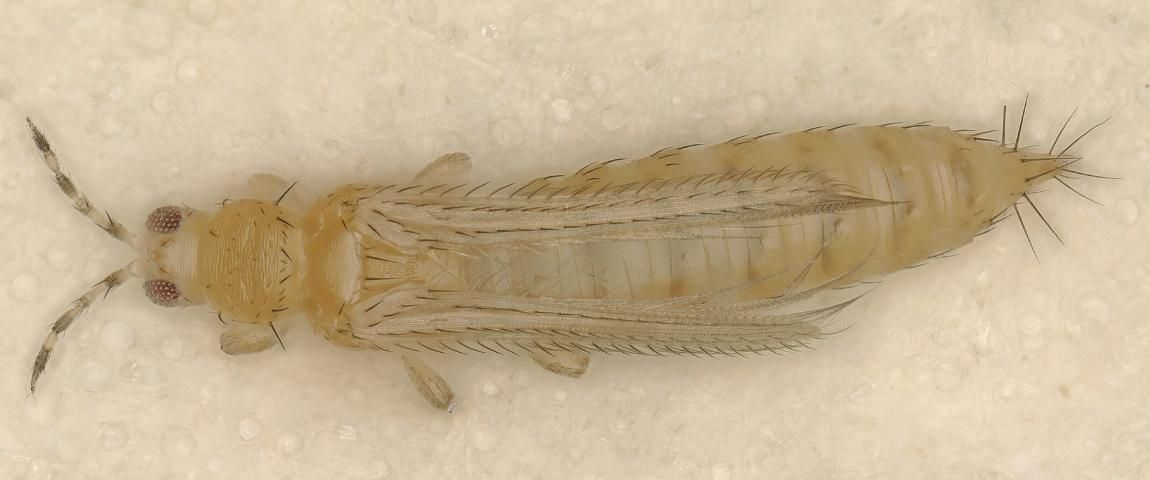
Mirids
The mirid, Dagbertus fasciatus (Figure 2), can cause damage to flowers and recently set fruit causing them to drop. Wounds on fruit may serve as a point of entry for decay organisms. These insects are comparatively small, and their nymphs can pass through several instars and increase in size. Color patterns change from a variety of greens to browns.

Mealybugs
The mealybugs may infest fruit and cause irregular spotting. Adult female mealybugs are white, covered with a mealy wax, and about 3 mm long (Figure 3).
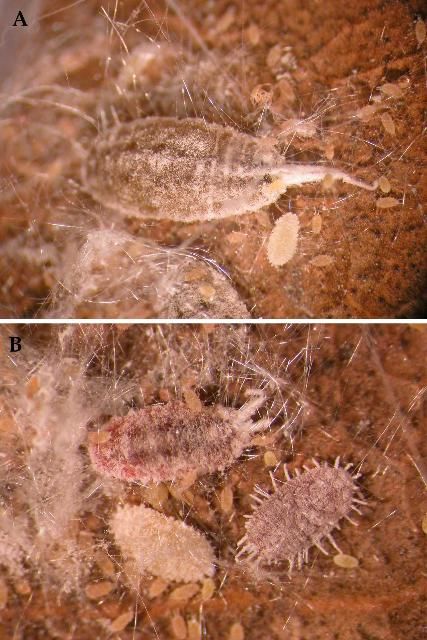
Scales
Several kinds of scales, including lesser snow (Pinnaspis strachani), coconut (Aspidiotus destructor), pyriform (Protopulvinaria pyriformis), mango shield (Milviscutulus mangiferae), oleander (Pseudaulacaspis cockerelli), acuminate (Kilifia acuminata), false oleander (Pseudaulacapis cockerelli) (Figure 4), croton (Phalacroccus howertoni) (Figure 5), Florida wax (Ceroplastes floridensis), Mango (Aulacaspis tubercularis) (Figures 6, 7, and 8), plumose (Morganella longispina), Florida red (Chrysomphalus aonidum), and Dictyospermum (Chrysomphalus dictyospermi) infest mango. These scales are found on the upper or lower surfaces of leaves and also on fruits. Scales are frequently parasitized by small wasps. Microterys nietneri (Motsschulsky) is an Encyrtid that attacks soft scales (Figure 9).
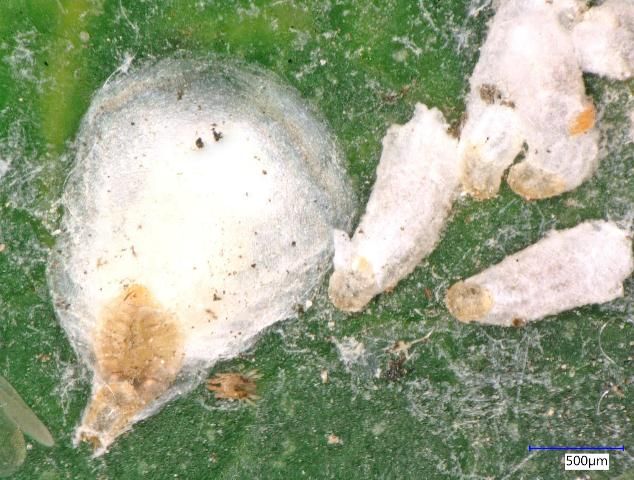

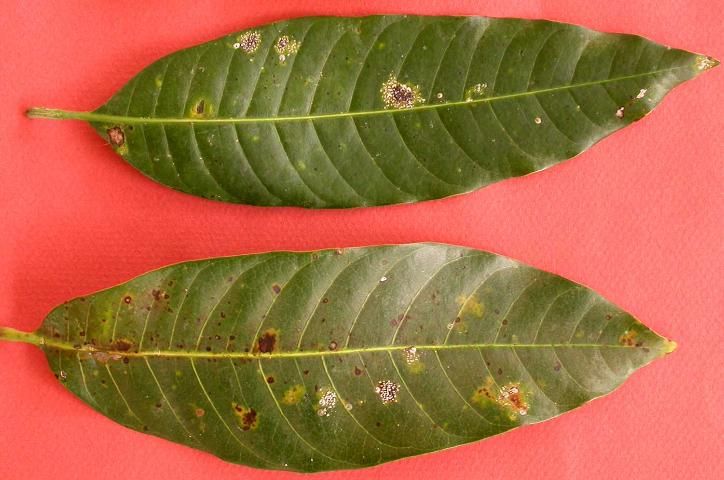
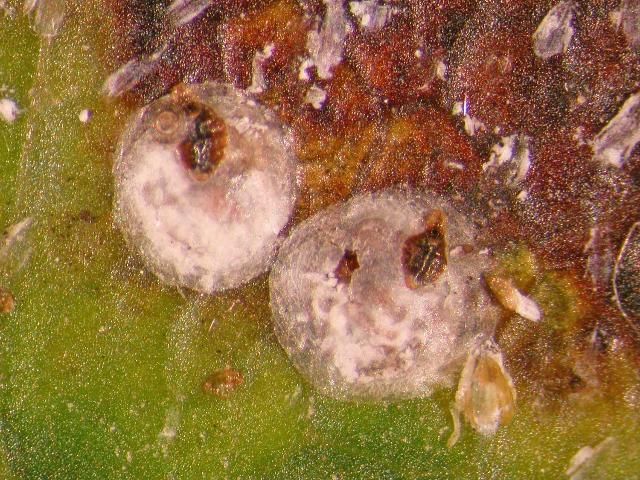

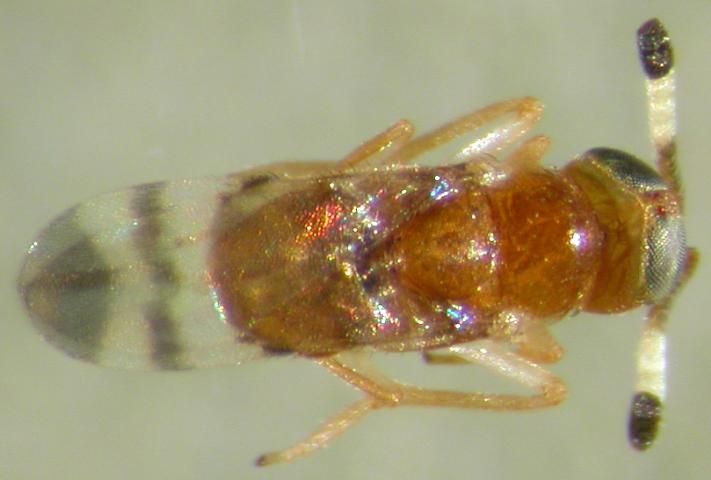
Insects and Mites on Foliage
For Scales and Mealybugs, please see the section on Fruits above.
Mites
The avocado red mite and the mango bud mite are serious mango problems.
The mango bud mite, Aceria mangiferae (Sayed) (Figures 10 and 11), causes proliferation of stems at the terminal branch. This symptom is known as witches broom (Figures 12 and 13). Young trees can be stunted if severely attacked during several consecutive seasons by this mite. These mites are very small and difficult to see, requiring a microscope for viewing.
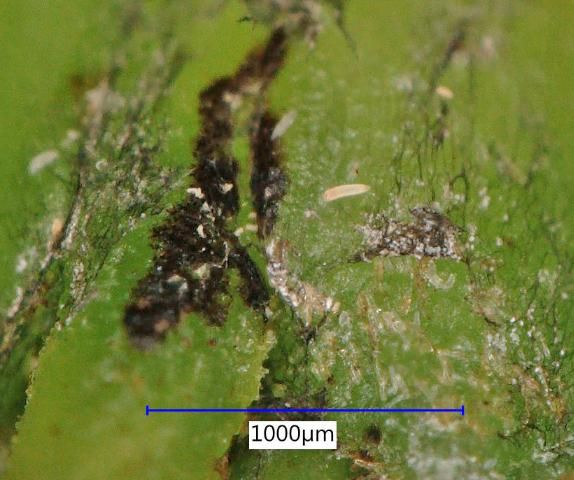
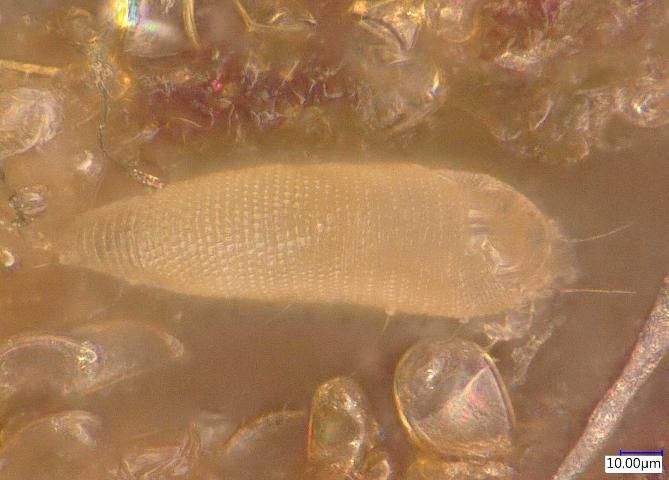
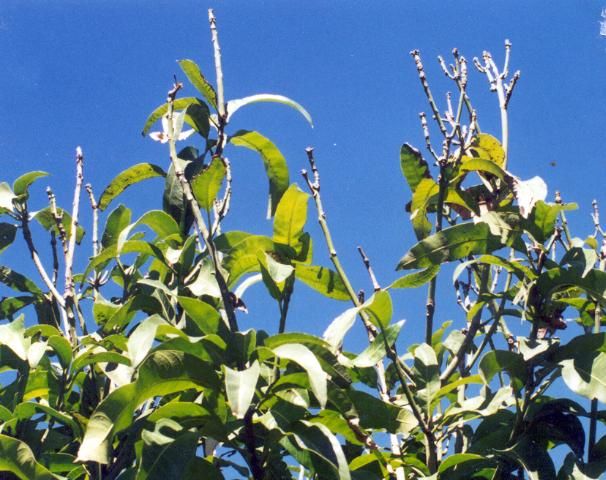
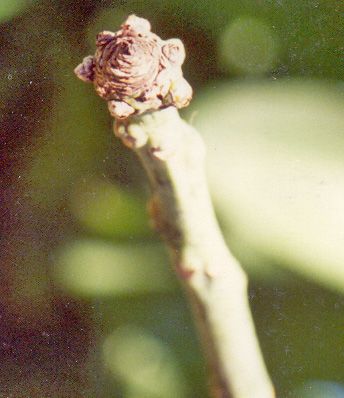
The avocado red mite, Oligonychus yothersi, (Figures 14 and 15) is a common pest of mango in Florida. Feeding is first confined to the upper surface of mango leaves; it is found first along the midrib, then along secondary leaf veins. The areas along the veins become reddish-brown and during heavy infestations can be covered with mites' cast skins. Damage to the leaf area is regularly observed from October through February, causing up to 30% reduction of photosynthetic activity of the leaves. This mite is an occasional pest in some orchards and is seldom observed in others. Periodic inspections are recommended during December, January, and February. Control measures may be started when the population reaches 6 or more mites per leaf.

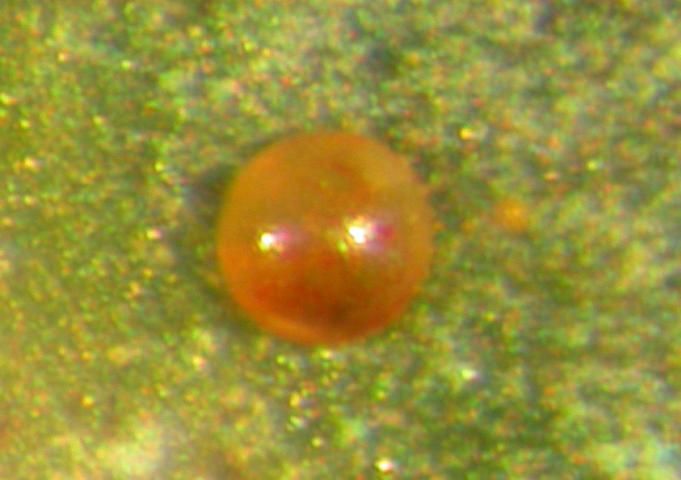
Life Cycle
The eggs are spherical and stalked, and adults have a pinkish color in their middle area with many purplish-brown blotches. The duration of the life stages can last from 14 to 15 days. Females are capable of laying 40 to 50 eggs during their life span.
Whiteflies/Blackflies
Whiteflies (Paraleyrodes pseudonarananjae) and blackflies (Aleurocanthus woglumi) (Figures 16, 17, and 18) suck cell sap from leaves, which wilt when whitefly populations are high. A sticky substance called honeydew is excreted by the whiteflies. Black sooty mold grows on the honeydew, and with high infestations, this can almost blacken entire trees, reducing photosynthetic efficiency and causing defoliation. Several parasitoids, i.e., Encarsia spp., attack immature stages and provide good control.
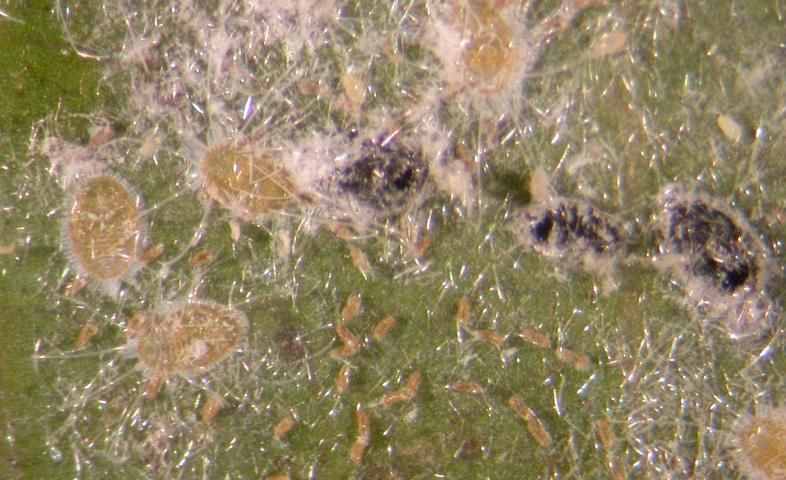

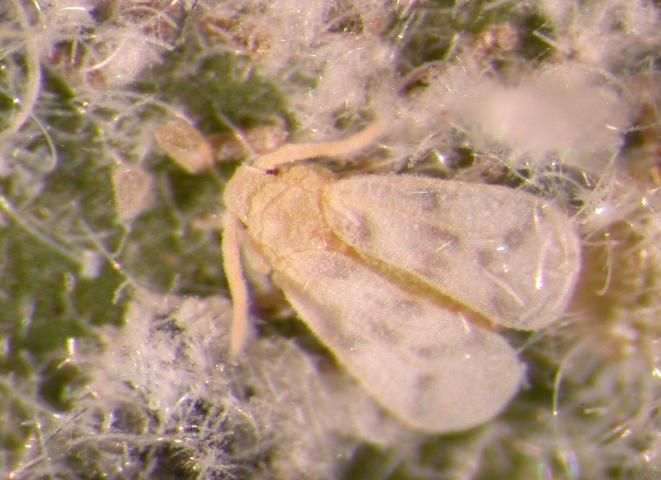
Beetles
A weevil native to Sri Lanka, Myllocerus undecimpustulatus undatus (Figure 19), first detected in Broward County in 2000, feeds on the foliage of mango trees. The larval stage of this weevil feeds on the roots of the plants.

Thrips
Red-banded thrips, Selenothrips rubrocinctus, are slender, yellowish and with a red band on the abdomen; about 1.5 mm long (Figure 20). Adults are dark brown to black (Figure 21). They can be found on both sides of the leaves, causing necrosis and subsequent leaf drop. When infestations are heavy, thrips feed on the entire surface of the leaves, leaving the leaf with a characteristic silver color. Infested leaves are spotted on the upper surface with fecal deposits that turn reddish brown to black.
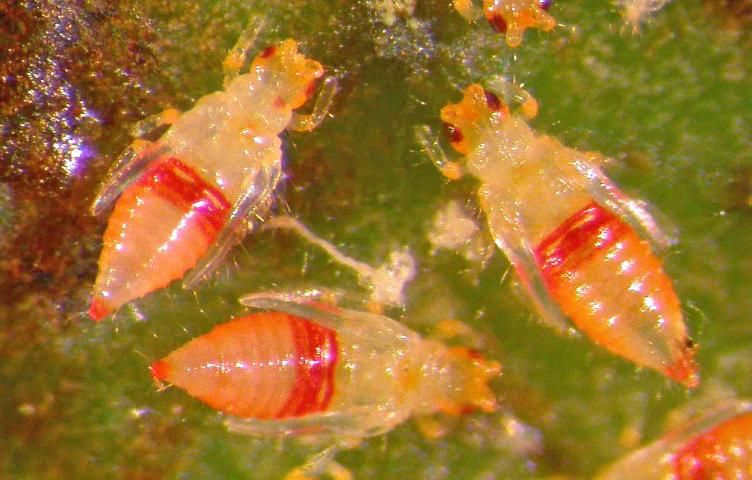
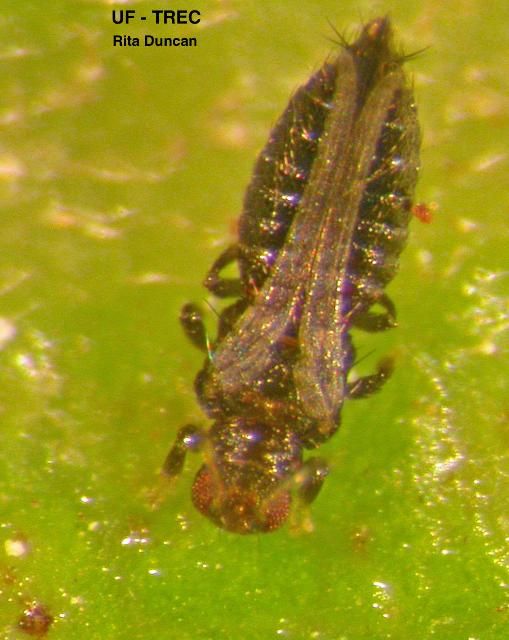
Insects on Stem and Trunk
Beetles
The scolytid beetles, Hypocryphalus mangiferae (Stebbing), attack the main stem and branches (Figures 22 and 23). Fungal mycelium growth can extend terminally and basally from the beetle gallery in the mango tree and can kill the affected branches. The insects prefer trees that have been weakened by pathogens, wind, etc., but after a population has been established in one orchard the infestation spreads to healthy trees. In Brazil and Asia they are associated with Mango Sudden Decline or Mango Wilt, where branches begin to gum, rot, and show cankers and vascular discoloration.

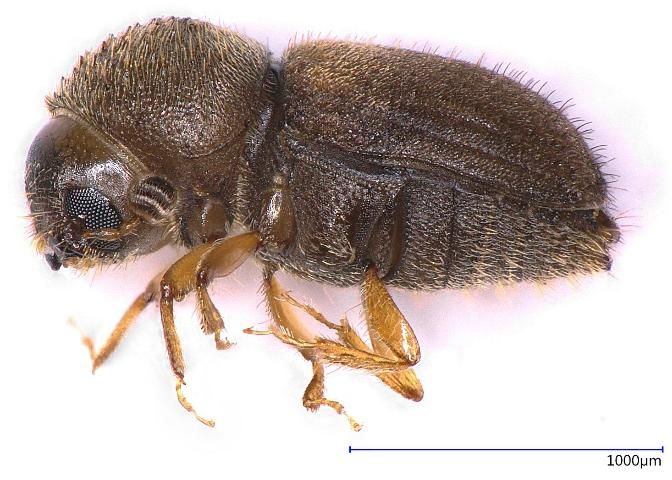
Control, Precautions, and Restrictions
Mangoes are subject to attack by several insects, however only a few have populations at levels high enough to be considered pests. Below is a website that contains control measures to use on an as needed basis. However, the user must read the pesticide label carefully and adhere to regulations. Your local UF/IFAS Extension office may be able to provide more information on pest control materials.
References
Gamliel-Atinsky E, Freeman S, Maymom M, Belausov E, Ochoa R, Bauchan G, Skoracka S, Peña J, Palevsky E. 2010. "The role of eriophyoids in fungal pathogen epidemiology, mere association or true interaction?" Exp. & Appl. Acarol. 51(1–3): 191–204
Peña JE. 1998. "Current and potential arthropod pests threatening tropical fruit crops in Florida." Proc Fla State Hort. Soc. 111: 327–329.
Peña JE. 2013. Potential Invasive Pests of Agricultural Crops. Wallingford, Oxfordshire: CABI. 440 p.
Peña JE, Aluja M, Wysoki M. 2009. Pests. In: Litz RE, editor. The Mango, Botany, Production and Uses, 2nd edition 2nd ed: CAB International, Wallingford, UK. Pp. 317–366.
Peña JE, Carrillo D, Duncan RE, Denmark H, Ochoa R, Welbourn C. 2013. Mites inhabiting tropical fruit in Continental USA. Fourth Meeting of the IOBC Working Group Integrated Control of Plant Feeding Mites. Paphos, Cyprus.
Pena JE, Duncan RE, Meister CW. 2008. "Effect of Pesticides on Pests Affecting Tropical Fruit." Proc Fla State Hort. Soc. 121: 1–4.
Peña JE, Duncan RE, Meister CW. 2006. "Chemical control of flowering thrips infesting tropical fruits." Proc Fla State Hort. Soc. 119: 21–24.
Pena JE, Mohyuddin AI, Wysoki M. 1998. "A review of the pest management situation in mango agroecosystems." Phytoparasitica 26(2): 129–148.